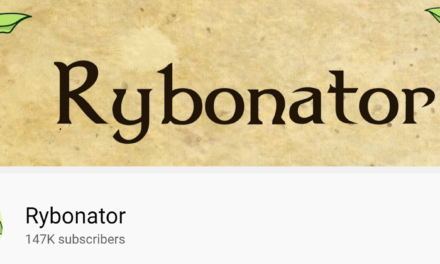Two troubling statistics popped up in The Tilt’s recent content entrepreneur research, Unconventionals: 2021 Benchmark Study of Content Entrepreneurs:
- 65% say they don’t worry about getting deplatformed and losing their audience.
- 72% don’t operate a single-channel content business.
Why are those concerning results? Because they indicate a lack of awareness or appreciation of problems that could thwart long-term content business success.
Let us explain.
The reaction to deplatforming troubles us because so many content entrepreneurs rely on third-party platforms. In our recent survey, respondents said they use Facebook (76%), Instagram (66%), LinkedIn (60%), Twitter (51%), and YouTube (47%).
Thus, those social media platforms control at least some of the content entrepreneur’s business. And since they are for-profit businesses, their goal is to make money for their owners, not the creators. They can change the rules any time they want to make a more profitable business regardless of the impact on creators and their content business.
The second troubling stat was that 72% of content entrepreneurs don’t operate a single-channel business. That’s particularly concerning given the pre- or early revenue status of those surveyed (57% for those who do it full-time and 93% for those who do it part-time).
72% of content entrepreneurs don't operate a single-channel business. That's a wrong move for early-stage content businesses: @TheTiltNews research #creatoreconomy Share on XA multichannel strategy is a smart (and necessary) move for mature content entrepreneurs. It’s a big mistake for beginning content entrepreneurs who should learn to walk before they try to run. Early-stage content entrepreneurs must invest all resources to grow and sustain a single channel before diversifying.
Tilt Advice
Now, a single-channel strategy doesn’t mean your chosen channel is the only place your content business operates. It simply means you have a primary channel for the business, and any other channels serve as marketing tools for that primary channel.
Matt Hobb’s Puppy Songs is a good example. While he tracks big numbers on TikTok (almost 430K followers), his primary business channel is Instagram (24K). As he told us, “The view count is lower. The whole machine is lower. But it’s all higher quality.” Effectively, Matt uses TikTok as his marketing channel, and Instagram has his business’ primary channel.
A single-channel strategy also isn’t the same as a single revenue stream. On almost all channels, you can develop a multi-stream revenue model, from advertising/sponsored content to subscriptions.
A single-channel strategy isn't limited to a single revenue stream. One channel can provide multiple income streams, says @AnnGynn. #contentbusiness #creatoreconomy Share on XHow do you pick the primary channel for your content business?
Here’s a simple exercise. Look at two things: (1) your goals for the business and (2) your target audience.
What do you want to do in and to come from this content business? List all the channels that could support that vision. Rank them in order based on your interest and goals. (Be realistic too. If you’re not interested in creating short videos, for example, TikTok shouldn’t be at the top of your list even though it might be “good for business.”)
Who is your target audience? Where do they live online? What channels are they already using to get content related to what you want to create? List the channels. Do a little research to see which of those vehicles resonate best with your target audience. Compare your audience list with your business goal list to identify a good match.
Pick the best content channel that fits your business goals and your target audience's interests & digital behavior. #startupadvice #contententrepreneur #creatoreconomy Share on XDon’t just look for the biggest numbers. Like Matt, you may find the truly interested audience engages through the less popular channels.
Or maybe you look at the research and see the chance to be a first-mover like Hasan Piker. While his audience was on Twitch, he launched a new topic – politics – to the livestreaming platform.
We’re big fans of making the primary channel one that you own and control (see deplatforming issue above). In the content game, those channel options include blogging, e-newsletters, online courses, podcasting, or even live events. That’s how bloggers The Mom Trotter and Sassy Spoon have done it.
Of course, making your primary channel a third-party site can work too. Just ask Spencer X, whose beatboxing TikTok content found an audience of over 53M and became one of the top-earning stars of the channel.
If you choose this third-party route, though, plan now how you’re going to move your core audience to an owned channel and avoid the business-killer deplatforming could bring.
As you build out your single-channel strategy, don’t give up too quickly. It will take time. In our research, we found content entrepreneurs averaged nine months to see their first dollar and 26 months until they earned enough revenue to support one person. As YouTuber Miles Beckler says: “You feel like nothing’s working. It’s really difficult to keep going in the face of zeroes or four people watching your video. I get that, but it’s worth it.”
About the author
Ann regularly combines words and strategy for B2B, B2C, and nonprofits, continuing to live up to her high school nickname, Editor Ann. An IABC Communicator of the Year and founder of G Force Communication, Ann coaches and trains professionals in all things content. Connect with her on LinkedIn and Twitter.




![How Surprising Your Audience Can Drive Engagement and Boost Growth [Examples]](https://www.thetilt.com/wp-content/uploads/2024/09/audience-suprise-440x264.jpg)





